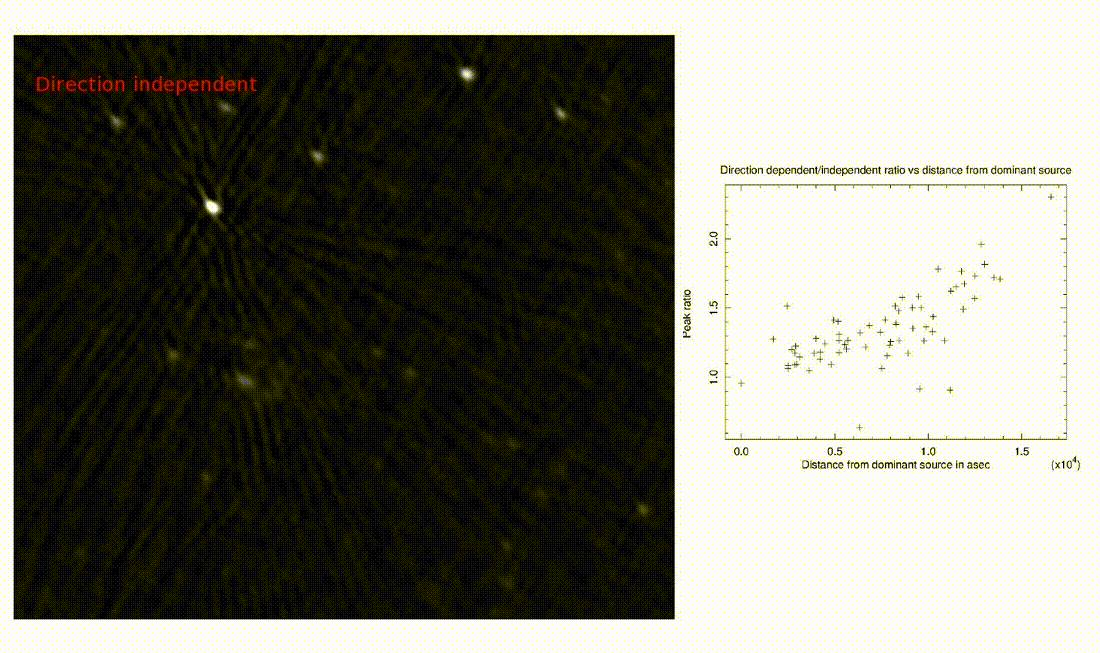Daily Image
09-10-2013Defocussing due to the Ionosphere
| Submitter: | Bill Cotton |
| Description: | The ionosphere distorts radio waves from space, making sources apparently move around in time. As a result, in longer exposures, the sources will look fuzzier and have lower peak values. The effect is similar to what we see by eye at night when we look at the stars, they jitter and change brightness. Due to the low observing frequencies (15-240 MHz), LOFAR is especially sensitive to the effects of the ionosphere, and new calibration strategies are being developed to correct for position changes and defocusing effects. These two images show the defocusing by the ionosphere of LOFAR LBA observations in the "Lockman Hole" region of the sky. The first is made using traditional calibration methods, which use the brightest source in the field to correct for time-dependent shifting of the image as a whole. The second image is produced with direction-dependent corrections, which also correct for image distortions. As a result, the peak flux of the sources is higher in the latter, and the noise is lower. The graph shows the ratio of the peak fluxes for the two methods as a function of distance from the dominant source in the field. As expected, the sources at larger distances clearly suffer from more defocussing. This demonstrates the need for direction-dependent calibration schemes for LOFAR in order to achieve reliable, high dynamic range images. Editor's note: Bill Cotton (NRAO) is visiting the Netherlands for a few weeks. He has been closely involved in ionospheric calibration for the VLA 74 MHz observations, which has served as an input for the design of LOFAR. |
| Copyright: | Bill Cotton, Ilse van Bemmel, Bas vd Tol, Maaijke Mevius, Raffaella Morganti,Isabella Prandoni |
| Tweet |  |
